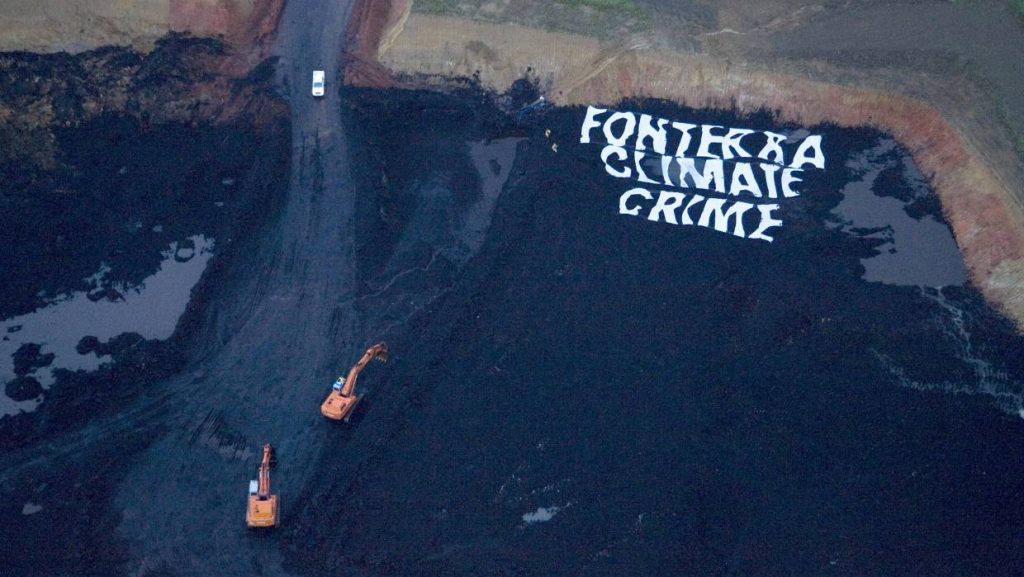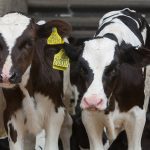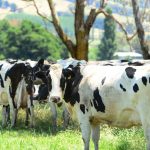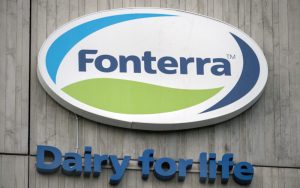
The heat is on Fonterra to move away from coal because of growing concerns about climate change.
Shaw said he understood Fonterra had a “fairly significant investment programme” that would see some of its existing manufacturing plants switch to liquid biofuels, electricity and woodchip-powered boilers.
But the Government was talking to Fonterra about how it could help the company accelerate the replacement of coal with renewable energy sources, he said.
“They are a commercial operation. We have to tread carefully and respectfully around that, but there may be things we can do.
“We set up the Green Investment Fund for precisely this kind of reason, to come up with creative solutions to particularly difficult financing problems – that is why that is there.”
The Green Investment Fund was announced by Shaw and Prime Minister Jacinda Ardern in December with the goal of “investing with business to reduce emissions while making a profit”.
Replacing Fonterra’s coal boilers was “a significant capital challenge”, Shaw said, but he believed it was doable.
The Government’s preference was not to subsidise industry, but there were a variety of ways it could potentially help the dairy giant, he said.
“Where there is a will there is a way.
“As the Prime Minister has said, we are an active government and we have been quite explicit – if Fonterra thinks there is something that is getting in the way of faster uptake then we have said they should come to us and we will see what we can do to help.”
Officials at the Ministry of Business, Innovation and Employment (MBIE) estimate about 8 per cent of the country’s greenhouse gas emissions are generated by “process heat” in industry and, within that, Fonterra’s milk plants are one of the largest contributors.
Fonterra tweaked its policy on coal boilers this month, saying it would not install any new coal boilers at its plants from now on, bringing forward its commitment not to do so from 2030.
But Shaw said he did not think Fonterra would or should stop there.
“Merely capping your emissions at today’s level isn’t going to work.”
Fonterra’s chief operating officer of global operations, Robert Spurway, said getting out of coal was not as easy as “just flicking a switch” but said it was up for the challenge.
“We are currently investigating options to move out of coal and are open to partnerships with government or other parties to achieve net zero carbon emissions by 2050,” he said.
“We have partnered with the Ministry for the Environment to develop a road map to a low emissions future and our recent announcement not to install any new coal boilers or increase coal capacity are part of the work we’re doing to transition away from coal.”
Fonterra would like to replace coal immediately but that was not feasible, he said.
“A staggered site-by-site approach, is prudent as we juggle significant considerations. We need to ascertain what is the best replacement for each site and then manage the transition while remaining competitive internationally so as not to adversely affect exports and the country’s economy.”
Shaw said Fonterra and Huntly power station-owner Genesis Energy were the country’s two biggest users of coal.
“Because Fonterra occupies such a huge proportion of our economy and our emissions profile, even their early moves will probably result in a shift in New Zealand’s emissions profile.”
MBIE officials said in a report that the electrification of industrial processes would be a key step in helping the country meet its climate change goals.
It would be difficult to eliminate process heat in some industries, such as steel production, because temperatures exceeding 1000 degrees were required.
But milk could be dried at 200 degrees, the ministry said.
Fonterra said in a submission to MBIE in May that one of the biggest obstacles to electrifying its plants was that the electricity grid would have to be upgraded at most of its locations.
The company could pay for such upgrades, but doing so would not guarantee it first dibs on the extra capacity, it said.
Fonterra is electrifying its factory at Stirling in South Otago and has used woodchips and wood pellets as fuel, but Spurway said it had estimated the cost of converting just of its one larger sites at Edendale in Southland would be $160m and would increase the factory’s operating costs by “at least 50 per cent”.
The company acknowledged in a submission in May that it did not have “perfect information about new technology and alternative sources of process heat” and had “some bias towards proven technology”, but said trials could help decrease the perceived risks.






















